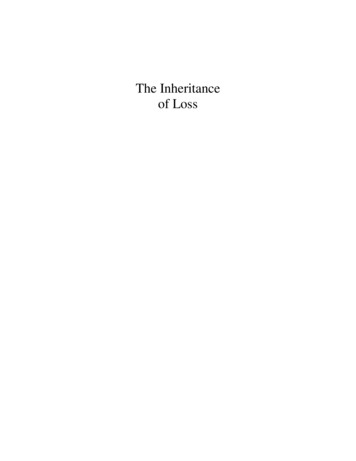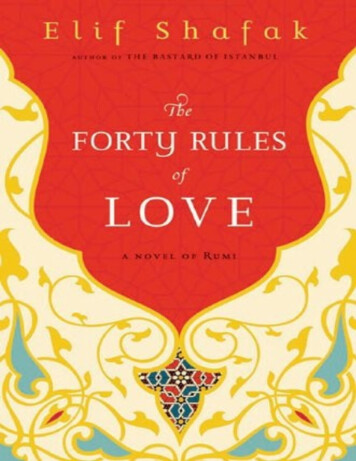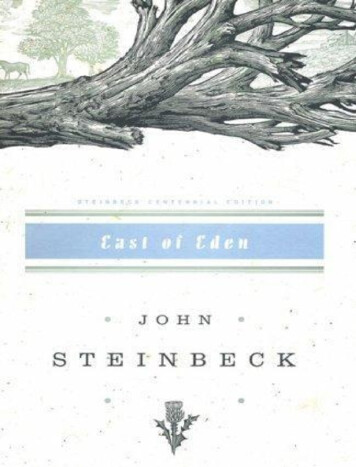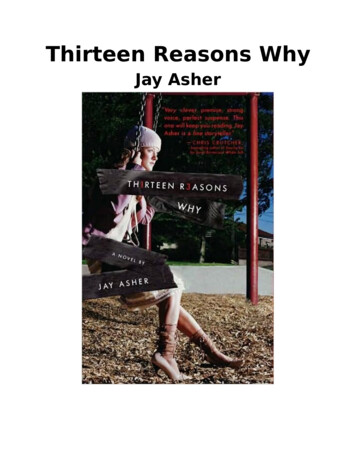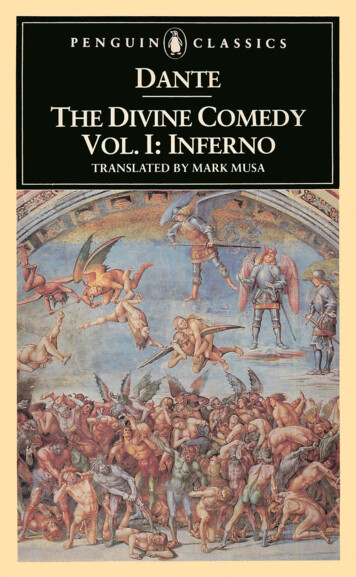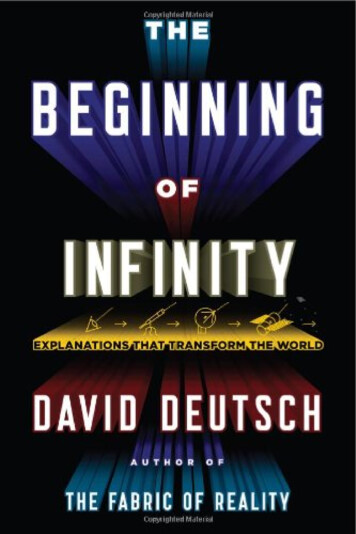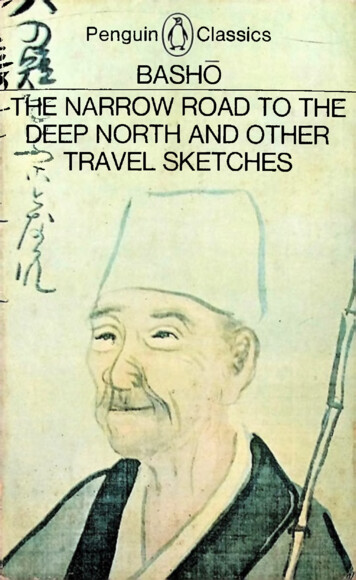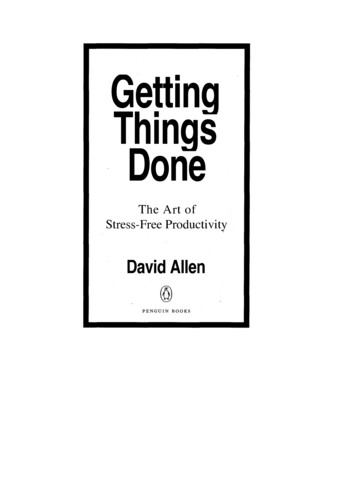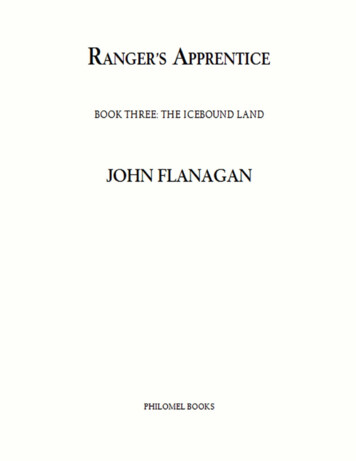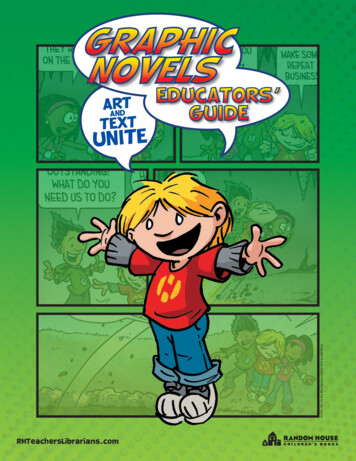
Transcription
Art from Hilo: The Boy Who Crashed to Earth 2016 by Judd WinickTAARNDTEXTUNITERHTeachersLibrarians.com
Simply, graphic novels are a logical extension of the comic book. They tell a story using pictures in sequence, panels,speech balloons, and other conventions of the comic book form and format. The key difference between illustratedbooks, picture books, and graphic novels is that graphic novels are generally longer and have a more developednarrative than picture books; additionally, they differ from illustrated chapter books because the illustrations are anintegral component of the story. Graphic novels might serve as bridges between picture books and illustrated chapterbooks or even between chapter books and traditional novels.Graphic novels can and should be used as any other form or format of reading material. Like any traditional novel, agraphic novel tells a story. The literary elements of traditional stories are present: plot, character, setting, theme, climax,etc. Figurative language, symbolism, and other literary devices are also present in many graphic novels. As a teaching tool,then, graphic novels offer educators the same array of possibilities as traditional texts. And there is a bonus of sorts: thescaffolding of illustration in addition to the text will make some abstract concepts more concrete. This may mean thatconcepts such as flashback, foreshadowing, and symbolism might be more readily identified and understood. But graphicnovels should also be used for independent reading recommendations and as part of book talks and displays. Graphicnovel adaptations of traditional texts such as The City of Ember and The Golden Compass should beoffered as alternative selections for students, especially those who may not be able to access a moretraditional text. Finally, graphic novels can be used to develop skills in visual literacy.Do not assume that all readers will know how to read a graphic novel. Educators should take some time to demonstratethe structure of the graphic novel format. Using a document camera or an ebook version of a graphic novel, educatorsshould familiarize readers with the various components and elements of the format. Begin with the discussion belowof the important elements of graphic novels.1. Color can be used in a variety of ways in graphic novels. Babymouse, Squish, and Lunch Lady do not use atraditional full-color approach; they have a more limited color palette. The Golden Compass and The City of Embergraphic novels use darker tones to help project mood and tone. Color plays an active role in the storytelling. The colorin Hilo changes when he is having a flashback. The following are a few questions to consider along with readers: 2What colors are predominant?What might the colors represent/symbolize?What would happen if different colors were used?Does the graphic novel use a full-color process? Why or why not?Are the colors bold, muted, or pastel?up to pg 3Art from top: Gina art 2016 by Judd Winick; Lunch Lady art 2016 Jarrett J. Krosoczka; Babymouse art 2016 by Jennifer L. Holm and Matthew HolmGraphic novels for younger readers—children and teens—have grown in popularity over the past decade ortwo. Once a niche format, graphic novels are becoming an important component of classroom and schoollibrary collections. Adaptations of traditional texts such as The City of Ember and The Golden Compass arejoining the stories of Babymouse, Squish, Lunch Lady, and other characters from graphic novel series. In the past,the value of graphic novels was often overlooked or not understood. Now graphic novels receive some of thehighest awards in the industry, including the Newbery and Printz Medals from the American Library Association.Graphic novels can provide both an enjoyable and informative reading experience for a wide range of readers.
(continued)novel, and the direction of a line (horizontal,diagonal, vertical) can imply different things.A diagonal line might indicate movement or loss ofbalance. A horizontal line could mean rest or peaceor calm, while a vertical line could indicate not justheight but strength. Readers should be able todetermine if the direction of an illustration or apanel or even a page or more is horizontal, vertical,or diagonal. Here are a few questions to consideralong with readers: Are lines thin or thick? Bold or sketchy? How does the artist use line to draw the readers’eyes in a certain direction? How are lines used to frame the panels or toseparate the white space from the text andillustrations?3. Composition is how the illustration is puttogether (composed). Size and placement are twocritical components of composition, so think aboutthese questions in your exploration with readers: W hat is in the center of the panel? In the top?The bottom? What might the placement ofobjects signify? Are some elements of the illustrations in thevarious panels larger than others? Why or why not?4. Frames can be used to contain text andillustration and create panels. Readers shouldbegin to determine if the frames are created by linesor simply become boundaries where the text andillustration end. What type(s) of frames are used in the book? Do the frames vary throughout the narrative orremain consistent? Are there frames within frames to accentuateanything in the story? If the frames were removed, how might the storychange? The art sometimes breaks the borders of theframe. What might the artist be conveying withthis technique?5. Speech balloons contain the text and dialogueof the graphic novel. Does the book separate textfrom the illustration, or does the text bleed into theillustrations without separation? These otherquestions are also valuable when talking about text,especially speech balloons: D oes the text appear in black andwhite or color? Are different colorsused? If so, why? Do the words differ in shape and size?How does the illustrator indicate emotional intensity,humor, etc., using speech balloons, colors, lines, etc.? Is there text in addition to speech? How is it setapart from the dialogue? Why is it necessary?6. White space is important in graphic novels.Events often happen in the white space. This issimilar to the action that happens offstage in plays.The gutter is the space between panels. Studentsshould think about some of the following questionsabout white space and gutters: Are the panels roughly the same size and shape?Why or why not? What could a change in shapeand size signify? Does anything bleed into the white space orgutters? If so, why do you think the author and/orillustrator used the space for this purpose? Does more happen in one panel than in another? How does the author/illustrator move the readerfrom one panel to the next? Are there connectionsprovided to the reader?7. Media and technique/style of illustrationfunctions in graphic novels as it does in any art.Just as the work of Picasso and the cubists differedfrom the work of Monet and the impressionists,different artists use different approaches in theirgraphic novel work. The following are somequestions for discussion: What media is being used? Are illustrations donewith colored pencil, watercolors, tempera, etc.?Sometimes information about the media can befound on the copyright page of a book. What sort of illustrative style is present? Is thiscartoon art? Are there elements of othertechniques such as pointillism, impressionism, orrealism? Is it possible to identify the illustrator’s work inother books, series, etc.? What are the criticalattributes of the work of various illustrators?Art from top: Squish art 2016 by Jennifer L. Holm and Matthew Holm; Squeak art 2016 by Jennifer L. Holm and Matthew Holm; Eddie art 2016 by Dan Santat2 . Line is a component of the art in a graphic3
SERIESJennifer L. Holmand Matthew HolmGrades 2-5Babymouse lives in two worlds. In her day-to-day existence, she longs for excitement andtravel. What she gets, however, are dodgeball games, a recalcitrant locker, and garbagedetail at home. In her dream world, though, Babymouse assumes secret identities, solvesmysteries, and generally wins the praise and adulation of her peers. Babymouse has anactive imagination, one that frequently gets her into tough situations at school and athome. Somehow she manages to triumph by the end of each story and stay true to herself.Visit RHTeachersLibrarians.com for a Babymouse educators’ guide.#1: Queen of the World!PB: 978-0-375-83229-1GLB: 978-0-375-93229-8#2: Our HeroPB: 978-0-375-83230-7HC: 978-0-375-93230-4#3: Beach BabePB: 978-0-375-83231-4GLB: 978-0-375-93231-1#4: Rock StarPB: 978-0-375-83232-1GLB: 978-0-375-93232-8#5: HeartbreakerPB: 978-0-375-83798-2GLB: 978-0-375-93798-9For a complete list of the Babymouse graphic novels, visit BabymouseBooks.com.ECTPERF ENCEICSFOR CTIONS!ECONNCheck out co-creator Matthew Holm’s resources for using graphic novels in theclassroom at MatthewHolm.com.#1: Super AmoebaPB: 978-0-375-84389-1GLB: 978-0-375-93783-54#3: The Powerof the ParasitePB: 978-0-375-84391-4GLB: 978-0-375-93785-9#4: Captain DisasterPB: 978-0-375-84392-1GLB: 978-0-375-93786-6#5: Game On!PB: 978-0-307-98299-5GLB: 978-0-307-98300-8For a complete list of the Squish graphic novels, visit SquishBooks.com.Several all-star graphic novel artists contributed to this collection. Jennifer L.Holm and Matthew Holm, creators of Babymouse and Squish, are joined by LunchLady’s Jarrett J. Krosoczka. Dav Pilkey, author of Captain Underpants, andDan Santat, author of Sidekicks, join in the fun, along with Raina Telgemeier,author of Smile and Sisters; Gene Luen Yang, Printz Award medalist for AmericanBorn Chinese; Cece Bell (El Deafo); Jeffrey Brown (the Jedi Academy series);Peanuts; and Ursula Vernon (Dragonbreath). The stories includes ninjas,superheroes, and warring cupcakes and veggies.Grades 2-5#1: Recess!PB: 978-0-385-37003-5HC: 978-0-385-37004-2#2: Brave New PondPB: 978-0-375-84390-7GLB: 978-0-375-93784-2#2: Lunch!PB: 978-0-553-51264-9GLB: 978-0-553-51265-6For a complete list of the Comics Squadgraphic novels, visit ComicSquadBooks.com.Art from top: Babymouse art 2016 by Jennifer L. Holm and Matthew Holm; Squish art 2016 by Jennifer L. Holm and Matthew Holm; Sonia and Josh art 2016 by Raina TelgemeierJennifer L. Holmand Matthew HolmGrades 3-7Squish began as a minor character in Babymouse #14: Mad Scientist and has becomethe star of his own series. Despite being single-celled organisms, Squish and his friendsattend school, play sports, and participate in a wide variety of activities. Though theyface obstacles, there is always a solution to their problems.
MEET HILO, D.J., and GINA!D.J. and Gina are TOTALLY ordinary kids. But Hilo . . . isn’t.Hilo is a boy who crashes to Earth. He doesn’t seem to knowwhere he came from or why he is on Earth. Thus begins thehumorous adventures of a robot boy who has an importantmission . . . if he could only remember what it is. Fortunatelyfor Hilo, he has two human friends who will help. And he’llneed all the help he can get when robot monsters manage tobreak through to Earth as well.Judd WinickGrades 3-7#1: The Boy WhoCrashed to EarthHC: 978-0-385-38617-3GLB: 978-0-385-38618-0#2: Saving theWhole Wide WorldHC: 978-0-385-38623-4GLB: 978-0-385-38624-1For a complete list of the Hilo graphic novels,visit HiloBook.com.H “A universally appealing tale.” —Kirkus, StarredLunch Lady and her assistant, Betty, serve up more than food to the Breakfast Bunch,a group of friends who somehow seem to become involved in all sorts of adventures atschool. From substitute teachers who are really robots to evil librarians and crazed authors,it’s up to the kids and crime-fighting Lunch Lady to solve the cases and rescue the school.Betty provides Lunch Lady with a variety of food- and kitchen-related gadgets to assist herJarrett J. Krosoczka in her efforts to thwart the villains.Grades 3-7#1: Lunch Lady and theCyborg SubstitutePB: 978-0-375-84683-0GLB: 978-0-375-94683-7#2: Lunch Lady and theLeague of LibrariansPB: 978-0-375-84684-7GLB: 978-0-375-94684-4#3: Lunch Lady and theAuthor Visit VendettaPB: 978-0-375-86094-2#4: Lunch Lady and theSummer Camp ShakedownPB: 978-0-375-86095-9GLB: 978-0-375-96095-6#5: Lunch Lady andthe Bake Sale BanditPB: 978-0-375-86729-3GLB: 978-0-375-96729-0For a complete list of the Lunch Lady graphic novels, visit LunchLadyBooks.com.Art from top: Hilo art 2016 by Judd Winick; Lunch Lady art 2016 Jarrett J. KrosoczkaGRAPHIC NOVEL ADAPTATIONSThe City of Ember: The Graphic NovelJeanne DuPrau;adapted by Dallas Middaugh;illustrated by Niklas AskerGrades 3-7This adaptation of Jeanne DuPrau’s novel transportsreaders to an underground city, aplace where residents have livedfor as long as anyone can recall.Lights help dispel the natural gloomof the city, but now the electricity isbeginning to fail. The future of Emberdepends on Lina and Doon, who mustdiscover a way to decipher an ancientmessage that might help them savePB: 978-0-375-86793-4their city.HC: 978-0-375-86821-4GLB: 978-0-375-96821-1The Golden Compass: The Graphic Novel, Volume 1Philip Pullman; adapted by Stéphane Melchoir;art by Clément OubrerieGrades 5 upThe world of Philip Pullman’s beloved His Dark Materialssaga is brought to visual life in book 1 of a three-volumegraphic adaptation of The GoldenCompass. Lyra Belacqua is content torun wild among the scholars of JordanCollege, with her dæmon familiaralways by her side. But the arrivalof her fearsome uncle, Lord Asriel,draws her to the heart of a terriblestruggle—a struggle born of Gobblersand stolen children, and a mysteriousPB: 978-0-553-52372-0HC: 978-0-553-52371-3substance known as Dust.GLB: 978-0-553-52386-75
1. Babymouse leads two very different lives. Her imaginary life is always happy and fulfilling. Reality, however, is quite2. Ask students to create a list of items various characters love and hate. Babymouse loves cupcakes; she fears herlocker. What about Felicia, Wilson, and others? Lists can be shared via Padlet.com or in another format using differentprograms or simply on paper on the wall. What about Squish? What are the fears of Hilo? How about Lyra?3. What other adventures might be in store for Babymouse? She has been a rock star, a derby racer, a scientist, atycoon, and even a dragonslayer. Individually or in groups, students could create a new adventure for Babymouse andher friends. What could happen to Squish in a subsequent adventure or two? Is there something still unresolved forLyra that might lead to another story? Is there a minor character in Lunch Lady who might be worthy of their ownstory? Hilo is a brand-new series, so brainstorm what might happen in the next installment. What other alien creaturesmight come to Earth? Could there be some friendly aliens who come to help?1. How is character revealed and developed through the text? Through the illustrations?Do you learn something different from text versus illustration?2. How does the artist use color? What colors seem to be emphasized? Does color play arole in relating the mood and tone of the story?3. Which, if any, of the characters from the graphic novel series would make for an interestingspin-off? Why?4. How is mood conveyed through the illustrations? How is it conveyed through the text? Inyour opinion, which is a better medium for conveying mood and tone?6Art from top: Babymouse 2016 by Jennifer L. Holm and Matthew Holm; Hilo and D. J. art 2016 by Judd Winickdifferent. Have students create a Venn diagram that shows the differences between fantasy and reality, as well as theoverlap between the two (see sample). This same chart could be used for Comics Squad: Recess! and Hilo.
1. Provide students with panels from a graphic novel and ask them to put them in some sort of sequence. They needto be able to explain how they arrived at their particular sequence (for example, what clues did they use from thevarious panels?).2. For the series graphic novels, break the class into groups. One group should read several of the Babymouse books,another Squish, another Lunch Lady. After each group has read and taken notes on their series, ask them to formnew groups so there is a mix of readers of different series in each group. Have them compare and contrast theirseries. How are they alike? How are they different? The discussion could center on some of the elements of graphicnovels (see pages 2–3) or other topics as needed. This same activity could be done for any two series, such as Hiloand Comics Squad.3. These graphic novels all have elements of fantasy and/or science fiction. Ask students to create a table or chartlisting the fantastic elements on one side and the realistic elements on the other.4. In a graphic novel, the format plays a significant role in the telling of the story; while there is text, some of thestory is told through the illustrations. Ask students to discuss which elements of the story are told in traditionalwords and which elements are relayed more in the pictures. What information is conveyed only in text? Only in theillustrations? In both the text and the illustrations?5. Of course, a logical extension activity would be to have readers design and create their own graphic novels.Brainstorm ideas about characters, conflict, theme, action, and resolution before they begin to develop their stories.6. Both The City of Ember and The Golden Compass have been made into movies. Compare and contrast the graphicnovels with their movies. What events, characters, etc., are different from graphic novel to movie? Alternatively, howwould students cast a movie from the Babymouse or Hilo or Lunch Lady or Squish books? Would it be animated, orcould it be live action?7
Get Graphic: The World in Words and Pictures has resources for teachers and librarians.A lengthy list of graphic novels with suggested age ranges is included along with a blog, reviews ofnew graphic novels, and links to other sites. getgraphic.org/whatisagraphicnovel.phpGraphic Novels: The Internet Public Library includes the history of the format, resources, and links towebsites containing more information about graphic novels. c Novels Reading List includes lists of recommended graphic novels for K–8 readers. These lists arefrom the Quicklists Consulting Committee of the Association for Library Service to Children of the American LibraryAssociation. ala.org/alsc/graphicnovels2014The use of graphic novels in a series will assist readers in identifying themes, supporting details, and central ideas.They are examining how events and individuals develop not just over one text but over the series of books.CCRA.R.1: Read closely to determine what the text says explicitly and to make logical inferences from it; cite specifictextual evidence when writing or speaking to support conclusions drawn from the text.CCRA.R.2: Determine central ideas or themes of a text and analyze their development; summarize the key supportingdetails and ideas.CCRA.R.3: Analyze how and why individuals, events, or ideas develop and interact over the course of a text.Reading graphic novels requires an understanding of structure, form, and format. Point of view is scaffolded throughthe use of graphic novels as well.CCRA.R.5: Analyze the structure of texts, including how specific sentences, paragraphs, and larger portions of thetext (e.g., a section, chapter, scene, or stanza) relate to each other and the whole.CCRA.R.6: Assess how point of view or purpose shapes the content and style of a text.Graphic novels exemplify diverse media and formats. Comparing and contrasting two different series allows readers tocompare author approaches.CCRA.R.7: Integrate and evaluate content presented in diverse media and formats, including visually andquantitatively, as well as in words.CCRA.R.9: Analyze how two or more texts address similar themes or topics in order to build knowledge orto compare the approaches the authors take.Research indicates that graphic novels are growing in popularity. They are complex but the scaffoldof illustrations and text permits reading independently.CCRA.R.10: Read and comprehend complex literary and informational texts independentlyand proficiently.Prepared by Teri S. Lesesne, a professor in the Department of Library Science at Sam Houston State University, whereshe teaches classes in literature for children and young adults.Random House Children’s Books School and Library Marketing 1745 Broadway New York, NY 10019 5/168Art from top: Squish art 2016 by Jennifer L. Holm and Matthew Holm; Rant art 2016 by Judd Winick ; Hilo with D. J. and Gina art 2016 by Judd WinickGraphic Novels is a site from the CCBC, the Cooperative Children’s Book Center. Resources for educators includeprint and online resources, as well as defending the use of graphic novels in the school and s.asp
frame. What might the artist be conveying with this technique? 5. Speech balloons contain the text and dialogue of the graphic novel. Does the book separate text from the illustration, or does the text bleed into the illustrations without separation? These other questions are also valuable when talking about text, especially speech balloons: Does the text appear in black and white or color .
